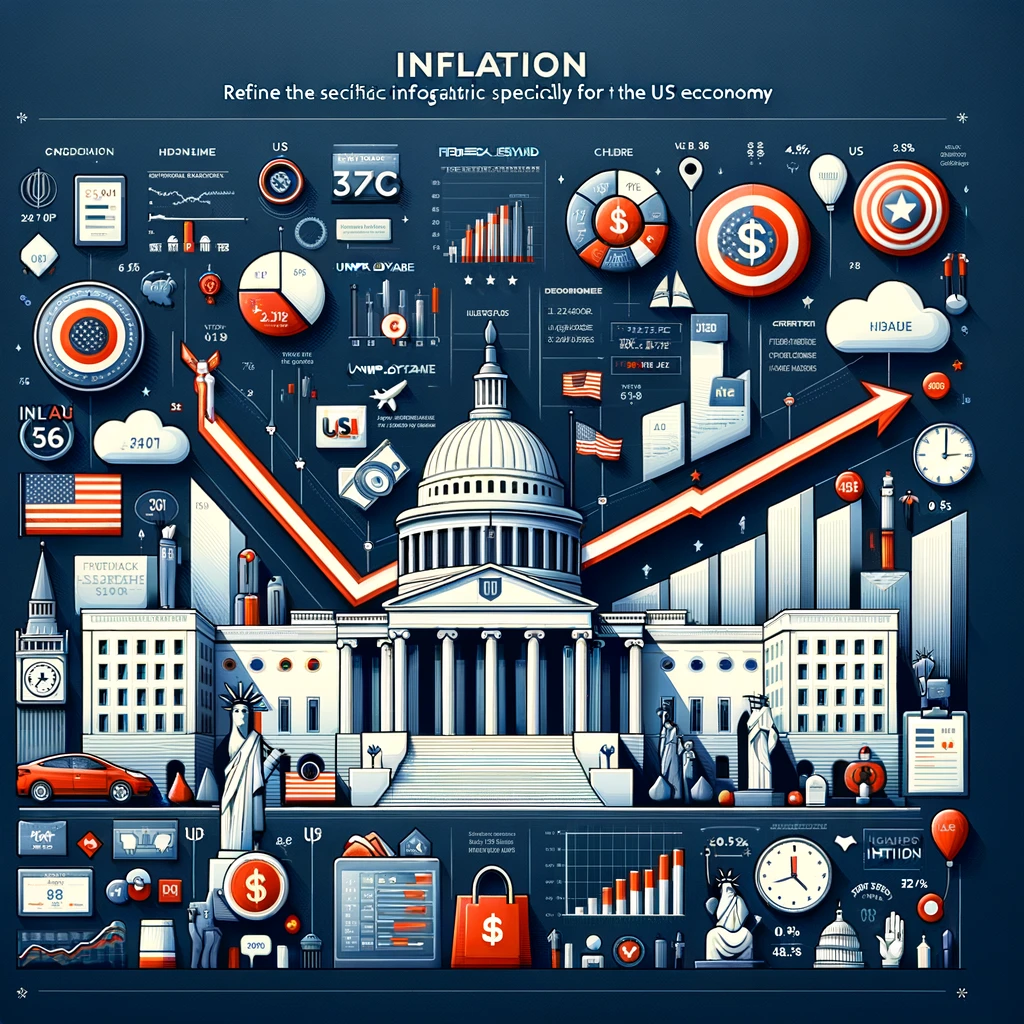Inflation Insights: 2022 Analysis & 2023 Expectations
2023-01-02

U.S. CPI Shows Accelerated Inflation in 2022 Amid Short-Term Fluctuations
The latest monthly data on the Consumer Price Index (CPI) for All Urban Consumers All Items in U.S. City Average reveals a noteworthy upward trend in inflation. The year-over-year change in the CPI has surged from 4.7% in 2021 to 8.1% in 2022, signaling a substantial acceleration in the rate of inflation. However, zooming in on the most recent months, we observe some fluctuation in the CPI growth rate. After reaching its peak at 9.0% in June 2022, there was a slight decline to 8.4% in July, followed by a marginal drop to 8.3% in August and September. Notably, there was a more significant decrease to 7.7% in October, and a further decline to 7.0% in November 2022. These declines might indicate some alleviation of inflationary pressures, or could be a temporary deviation from the overall upward trend. However, it's crucial to maintain a cautious stance as the CPI remains historically high. In a longer-term perspective, the average year-over-year change in the CPI has been substantially higher in 2022 compared to previous years, underscoring the persistent and pronounced inflationary environment. These developments have raised concerns about the potential implications for consumers' purchasing power, cost of living, and overall economic stability.
Volatility in Sticky Price Consumer Price Index Raises Questions About Inflation Impact
The Sticky Price Consumer Price Index, which tracks goods and services with infrequently changing prices, has shown significant volatility in the past year. In the latest data, the year-over-year change in the index exhibits a rollercoaster pattern from December 2021 to November 2022. Starting at 105.4% in December 2021, the index spiked to 186.2% in February 2022, only to drop sharply to 90.2% in May 2022 before rebounding to 152.7% in August 2022. This erratic behavior deviates notably from the relatively stable trend observed in previous years, where the average year-over-year change was in the single digits. The substantial deviation in 2022, with an average change of 133.9%, reflects extreme price movements within the categories captured by the index. These drastic fluctuations could have significant implications for U.S. inflation. The surge in the index from December 2021 to February 2022 indicates abrupt price increases in the goods and services tracked, which could translate into higher inflationary pressures. Conversely, the sharp decline in the index from February to May suggests a sudden slowdown in price growth. Such large swings in a subset of the Consumer Price Index raise questions about the underlying causes of these price movements and their potential impact on overall inflationary trends in the economy. Understanding the driving forces behind these changes in the Sticky Price Consumer Price Index is crucial for gaining insights into future inflation expectations.
Inflation Expectations Fluctuate Throughout 2022, Showing Signs of Shifting Consumer Sentiment
The latest University of Michigan Surveys of Consumers data on inflation expectations, specifically the median expected price change over the next 12 months, shows some interesting trends. From January to April 2022, inflation expectations remained relatively stable at 4.9% before experiencing a notable uptick to 5.4% in March and maintaining this level through June. However, in July, we observed a slight decrease to 5.2%, followed by a more significant decline to 4.8% in August and a further drop to 4.7% in September. Subsequently, the data showed a modest increase to 5.0% in October, a slight decline to 4.9% in November, and a more noticeable decrease to 4.4% in December. These fluctuations suggest that while there was a period of heightened inflation expectations mid-year, there has since been a downward trend, culminating in a decrease below the levels seen earlier in the year. This may indicate a shifting sentiment regarding future price changes among consumers, potentially influenced by various economic factors such as supply chain dynamics, monetary policy, and global market conditions. It will be important to monitor these changes in inflation expectations as they can impact consumer behavior, investment decisions, and overall economic outlook.
February 2024 Breakeven Inflation Rate Data from Federal Reserve Bank of St. Louis
The latest monthly data on the Breakeven Inflation Rate, sourced from the Federal Reserve Bank of St. Louis for February 2024, reveals the following figures: the 5-Year breakeven inflation rate stands at 2.35%, the 10-Year at 2.3%, and the 30-Year at 2.4%. These rates represent market-based measures of expected inflation derived from the difference in yields between Treasury Constant Maturity Securities and Treasury Inflation-Indexed Constant Maturity Securities. The breakeven inflation rates are utilized by investors and analysts to gauge market expectations for inflation over different time horizons. It's crucial to heed these measures as they offer insights into investors' inflation outlook, which can impact bond yields, investment decisions, and overall economic expectations.
Federal Reserve Bank of Cleveland's December 2022 Expected Inflation Rates Inform Economic Decisions
The latest monthly data on expected inflation, as per the Federal Reserve Bank of Cleveland, provides valuable insight into the anticipated trajectory of inflation. As of the most recent update in December 2022, the expected rates of inflation stand at 2.86% for the 1-year horizon, 2.53% for the 2-year horizon, 2.27% for the 5-year horizon, and 2.22% for the 10-year horizon. These figures are crucial indicators for a wide range of economic activities, including investment decision-making, pricing strategies, and monetary policy formulation. The meticulous approach employed by the Federal Reserve Bank of Cleveland, incorporating Treasury yields, inflation data, inflation swaps, and survey-based measures of inflation expectations, underscores the comprehensiveness of the analysis. These numbers carry significant implications for various market participants, making them pivotal reference points for informed economic decision-making.
